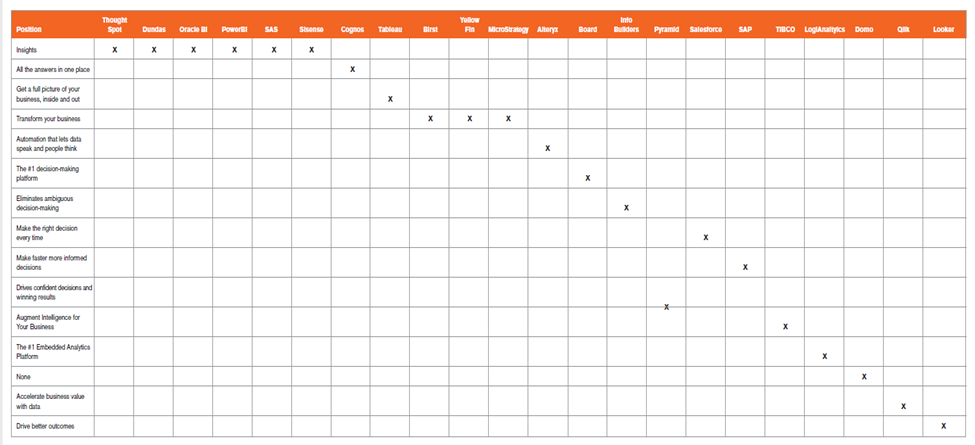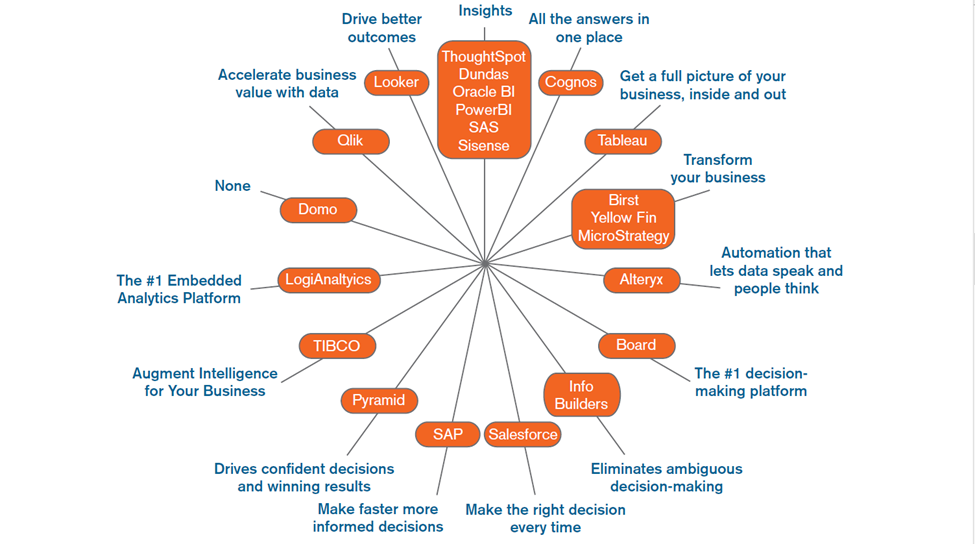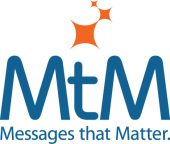When colleagues or peers or marketing consultants refer to positioning, what do you think they mean? If you’re not sure, you’re not alone.
There is often a debate about what positioning is, and what it is not. Confusing matters further, there are two proper usages of “positioning:”
- How your company is situated relative to its competitors;
- How your offering is situated in the minds of customers and target audiences.
This article focuses exclusively on number 2. At Messages that Matter, we define positioning as the mental space in your target audience’s mind that you can own with an idea that has compelling meaning to the target buyer. It’s in this mental space where your product’s solution to the target’s most pressing problem meet and form a meaningful relationship.
What is a positioning statement?
To claim a position in your market, create a positioning statement that is unique and important to the target audience. A positioning statement is a short, declarative sentence that addresses the target market’s most pressing problem by expressing a benefit. It makes it clear why the target market should care about your claim in your positioning statement and take action. Your positioning statement becomes the theme for all your marketing communications. Here are examples of positioning statements:
- Kit Software helps maximize the value of your commodity trading operations.
- Membrain helps your sales team achieve consistent performance in complex sales.
- Deterministics Labor Intelligence helps you use the right amount of labor to run your restaurant chain more profitably.
The reaction you want to your positioning statement is “that’s interesting! Tell me more. How do you do it?” Support points unfold your story in more detail and explain how you deliver on the promise made in the positioning statement. Good support points – three to four sentences – explain or substantiate the claim made in your positioning statement. Here is a simplified example:
Positioning statement:
Kit Software helps maximize the value of your commodity trading operations.
Support points:
- You can extract more profit from each trade through efficient execution.
- Integrates trading, logistics and finance to improve your business/trade performance.
- Enhance your trading capabilities through effective use of resources.
Notice how each support point explains the “more profit” claim made in the positioning statement and addresses the need to market to secondary buyers including the CFO, trader and logistics manager.
A positioning statement and three to four support points make up your message strategy. The combination can be extremely detailed and makes it easier to deliver the same message in all your marketing communications, which is one of the keys to claiming a position in your market.
Your message strategy is like a recipe for all marketing communications. Follow the recipe and you get a good story!
Effective positioning makes prospects want to know more
Good positioning not only entices a potential prospect to learn more about your offering. It also serves as the first level of qualification. Ideally you want a recipient to react to your message by thinking either “that’s me,” or “that’s not me.”
In order to get that reaction, and to gain access to that mental space in your target market’s mind, you need to know your customer as well as you know your offering. If time is limited to do research, start by interviewing sales team members. They provide quick access to initial information about the customer and what caused them to buy.
If interviewing sales team members is all that time allows, at least the intelligence is coming directly from the battle front. Sales is one of the best sources of information about your customer and competition.
You’ll learn who the No. 1 target buyer is, what’s really happening on the battle front, and gain knowledge and understanding that will guide your decisions throughout the positioning process.
From sales you can gather most of the information you need to position effectively including:
- Customer problems
- Competitive intelligence
- Ideal customer profile
- The purchase process
- Why you win and lose
Hopefully you’ll have time to interview customers to really understand them and confirm some of the information provided by sales. Pick five to ten of your typical customers and call them to ask for 10 minutes of their time. Ask them what problems they sought to solve with your product. Then ask them to rank those problems in priority order, with only one problem holding first place on the list.
If your customers are feeling talkative, ask more of the questions from this list:
- What caused you to search for vendors before you selected our company product?
- What problem(s) or challenge(s) does our company product solve? (rank them by importance)
- How were you solving those problems or challenges before you selected our company’s product?
- What are the benefits of using our product?
- What do you like or dislike about our product?
- What other vendors did you consider before selecting us?
- Why did you select our company product over the competition?
- Can you remember any of the strengths and weaknesses of the competition?
Your target audience will listen to your positioning statement when you speak their language by emphasizing that you can solve their pressing business problem. But if you sound just like everyone else in your market, they won’t listen – and your marketing will fail.
Pay attention to how your competitors are positioned
Differentiation is essential because your target audience is good at ignoring marketing messages, especially those that they have heard before from your competitors. They’ll also ignore meaningless positions and ones that are overused and common in many B2B markets today such as “transformation,” innovation,” “empowerment,” and “insight.” This link takes you to “Why differentiate and how to do it.”
It’s fairly easy to scout your competition and learn how they are positioning themselves, because they do it in public. Start reading and analyzing e-mail advertising, banner ads, marketing collateral, and especially websites with an eye to deducing the position behind them.
A positioning statement frequently appears in the first or last paragraph (or both) of an advertisement, or in a prominent place on the home page of a website. A good one should contain a focused benefit idea or concept that addresses a real business challenge and, ideally, the target audience’s number one problem. For each competitor, analyze as much of their marketing communications as possible, including websites, direct and e-mail marketing pieces, brochures and press announcements.
Put competitors’ positioning statements in a table
Once you have determined the position for each competitor, organize the claims in a table. Some competitors are likely to have similar or even identical positioning statements. Other competitors may publish many claims, making it more difficult to determine how they are positioned, if at all. It is a common mistake for companies to make two or more benefit claims of equal importance, so check for those, too. Here is a real-world example of how the following mid-market and enterprise Business Intelligence (BI) software companies are positioned:

OK, you’ve analyzed your competitors and created an informative table. Now what? The table isn’t the easiest way to see the competitive landscape. You need Messages that Matters’ perceptual mapping tool that makes it easy to see how your competitors are positioned. Here’s what a real-world perceptual map looks like; it shows you how Business Intelligence vendors were positioned in August 2020:

This perceptual map confirms what Ries and Trout observed many years ago when they published the marketing classic, “Positioning: The Battle for your Mind.” They lamented that “… too many companies embark on marketing and advertising as if the competitor’s position did not exist. They advertise their products in a vacuum and are disappointed when their messages fail to get through.”
Differentiation cuts long sales cycles down to size
Differentiation is what companies should covet the most. Yet few successfully achieve this, generally because they either don’t know how to evaluate and determine competitors’ positioning or simply don’t consider it sufficiently important.
Need proof that many B2B software companies fail to differentiate? Just take another look at the perceptual map above. Six vendors claim to deliver “insights” while five others facilitate decision making and three magically transform your business.
Most B2B technology companies complain about long sales cycles. But failure to differentiate is one reason prospects take so long to decide. They are confused. They can’t tell one option from others; everyone is saying the same thing.
In contrast, a differentiated position helps the brain make a fast decision, according to “Neuromarketing,” a book I highly recommend or you can read my two-part series on the topic. Unique claims highlight the difference, gap, or disruption our brain is seeking to justify a quick decision. Your target audience is attracted to powerful, unique claims and “responds favorably to clear, solid contrast. It is hard wired to pay attention to contrast. Sharp contrast helps your prospects make decisions more quickly and easily, and contrast is often needed to trigger a decision.”
Executing your message strategy: The importance of consistency and repetition
Without careful management, the best message strategy in the world will fail. Successful management requires consistency and repetition. Successful management requires consistency and repetition. Successful management… well, you get the idea.
Your position won’t stick in your target audience’s mind unless you use the power of consistency and repetition.
What do I mean by consistent? I mean sticking to your position as the central theme in all your marketing communications. Being consistent means delivering your message accurately in all media, all channels, all markets. Consistency will improve the effectiveness of your overall marketing program in the short term and create a leadership position in the long term.
Repetition means communicating your position over and over and over and over. Keep in mind your prospects know nothing about your offering, and they really don’t care. You’re competing with thousands of other messages. Put yours out there often.
Repeat your positioning statement often and for a long, long time
Which is more important – repetition or consistency? Although repetition and consistent execution go hand in hand, repetition is the stronger partner. Repetition – that is, repeatedly exposing the target audience to executions of the same position over an extended time – is perhaps the most important factor in claiming a position and giving it staying power.
“Neuromarketing” explains why you can’t claim a position without repeating it often over an extended period of time. The book says that repetition of a few simple words triggers the brain to note ‘I should remember that.’
Effective positioning for the long-term requires patience and conviction while others in your company may want to try something new. Remember good positioning never gets old or stale. But no matter how clever or compelling your positioning statement is, it won’t stick unless is executed consistently, and repeatedly over a long period of time; like several years! Remember, the longer you stick with your position, the more likely you will claim that mental space in your target audience’s mind.
Want to read more about the positioning framework described in this article? Download my free eBook “Introduction to positioning for competitive advantage.”
